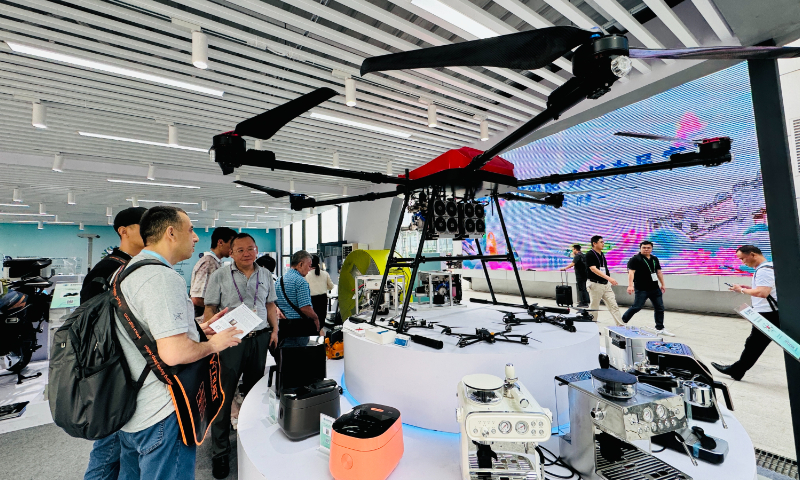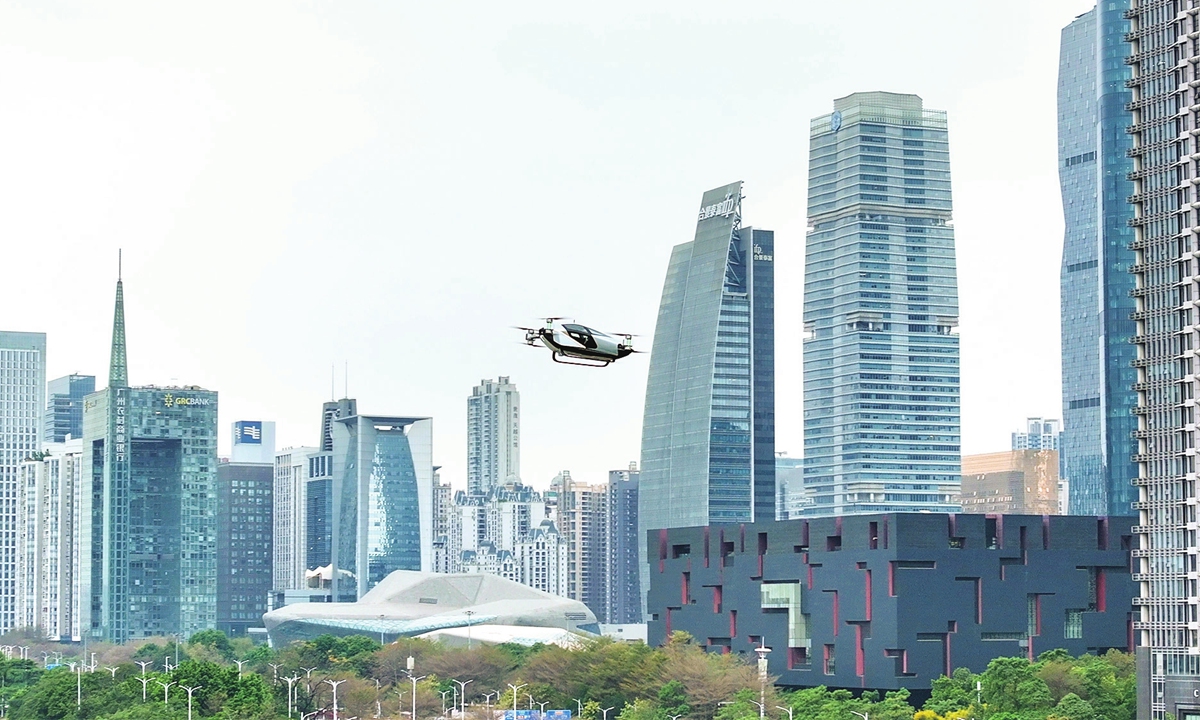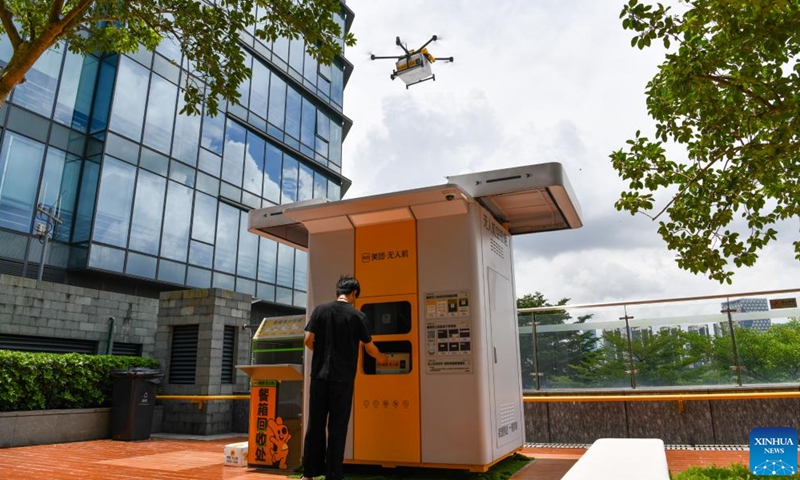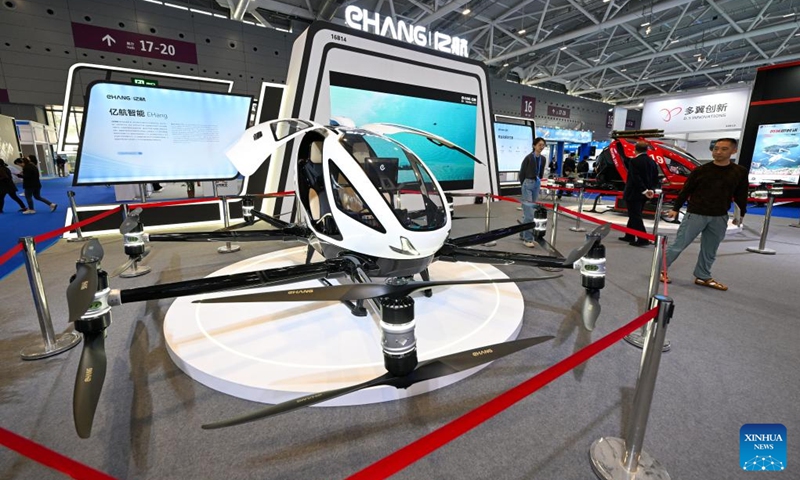
Overseas buyers get information about an unmanned aerial vehicle at the 135th session of the Canton Fair in Guangzhou, South China’s Guangdong Province, on April 15, 2024. Photo: Chi Jingyi/GT
A "low-altitude economy" exhibition area debuted at the 135th session of the Canton Fair, which opened on Monday, showcasing China's efforts to foster emerging and future-oriented industries.
The "low-altitude economy" refers to products such as drones that operate at low altitude. The exhibition area has a particular focus on products made in Jiangmen, a city in South China's Guangdong Province with a well-developed advanced equipment manufacturing industrial cluster, showcasing products such as unmanned aerial vehicles (UAVs), smart home appliances and motorcycles, the Global Times learned.
Jiangmen-based Zilink Aero Technology Co was among the exhibitors, hoping to explore the international market. "We hope we can match with global buyers directly through the Canton Fair," Xue Junzhao, sales manager of Zilink, told the Global Times on Tuesday.
Zilink is a developer and manufacturer of oil and electric hybrid UAVs, suitable for emergency search and rescue, as well as forest fire fighting.
At present, the company mainly supplies drone parts to other manufacturers, who will assemble the parts and export the final products, which means Zilink has not yet established effective export channels.
"We have received many inquiries about our UAVs and some overseas buyers also want us to help them set up factories abroad," said Xue.
A buyer from the US, who preferred not to be named, told the Global Times on Tuesday that he has 20,000 hectares of farmland.
Seeding or spraying pesticides with a purely electric drone requires frequent charging. The oil and electric hybrid UAV can operate for two hours at a time, making it extremely efficient, the buyer said.
"I am very close to placing orders for this product. But still I will compare it with other drone products before making a final decision," the buyer said.
Seven years ago, drones were considered a novelty. But today, people are accustomed to small drones flying overhead and electric vertical take-off and landing aircraft (eVTOL), especially in Guangdong's Guangzhou and Shenzhen, which both accommodate industrial clusters related to the low-altitude economy.
Shenzhen has formed a complete industrial chain integrating mold manufacturing, platform development and product manufacturing of drones and eVTOLs, with an output value of 75 billion yuan ($10.4 billion) in 2022, accounting for 70 percent of the national total, official data showed.
Guangzhou is home to 45 low-altitude industrial chain enterprises, with an annual revenue of about 12.5 billion yuan, covering the middle and lower reaches of the industrial chain.
On April 8, Guangzhou-based Ehang Holdings, a Chinese urban air mobility technology platform company, obtained a production certificate for its EH216-S eVTOL aircraft from the Civil Aviation Administration of China (CAAC), a world-first.
Guangzhou and Shenzhen are representatives of China's fast-growing low-altitude industries. In 2023, the scale of China's low-altitude economy reached 505.95 billion yuan, with an annual growth rate of 33.8 percent, according to a report released by the China Center for Information Industry Development (CCID) on April 1.
By 2026, the scale of the low-altitude economy is expected to exceed 1 trillion yuan, per the CCID report.
China will foster new growth engines in fields such as biomanufacturing, commercial spaceflight, and the low-altitude economy, according to the Government Work Report released in March.
This is the first time that the low-altitude economy has been included in the Government Work Report, showing the country's efforts to foster emerging industries and to modernize the industrial system and develop new quality productive forces.



